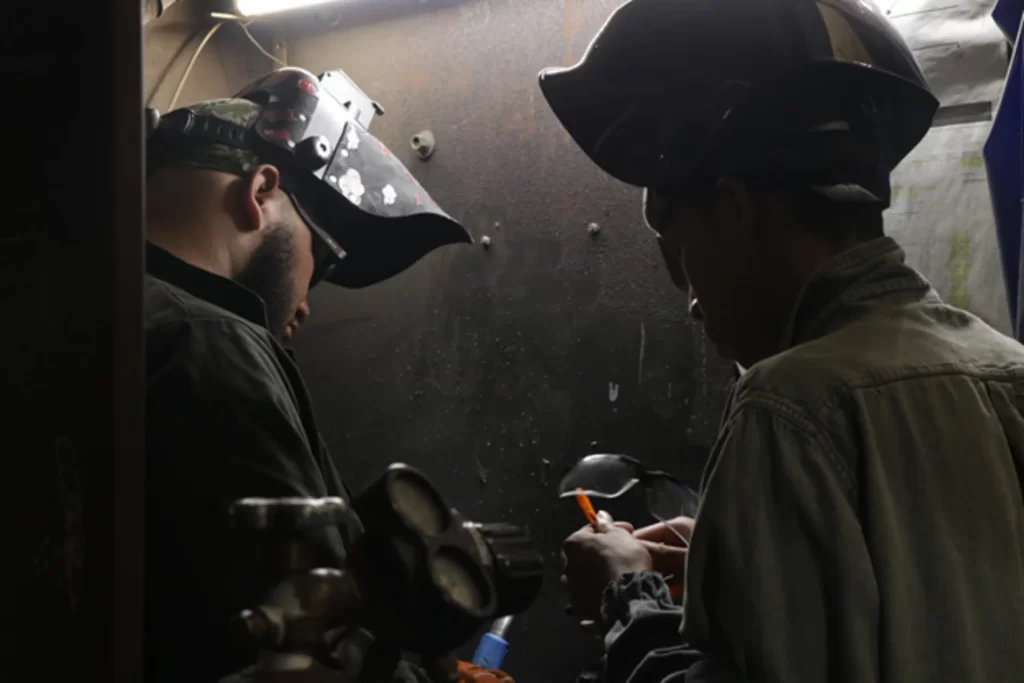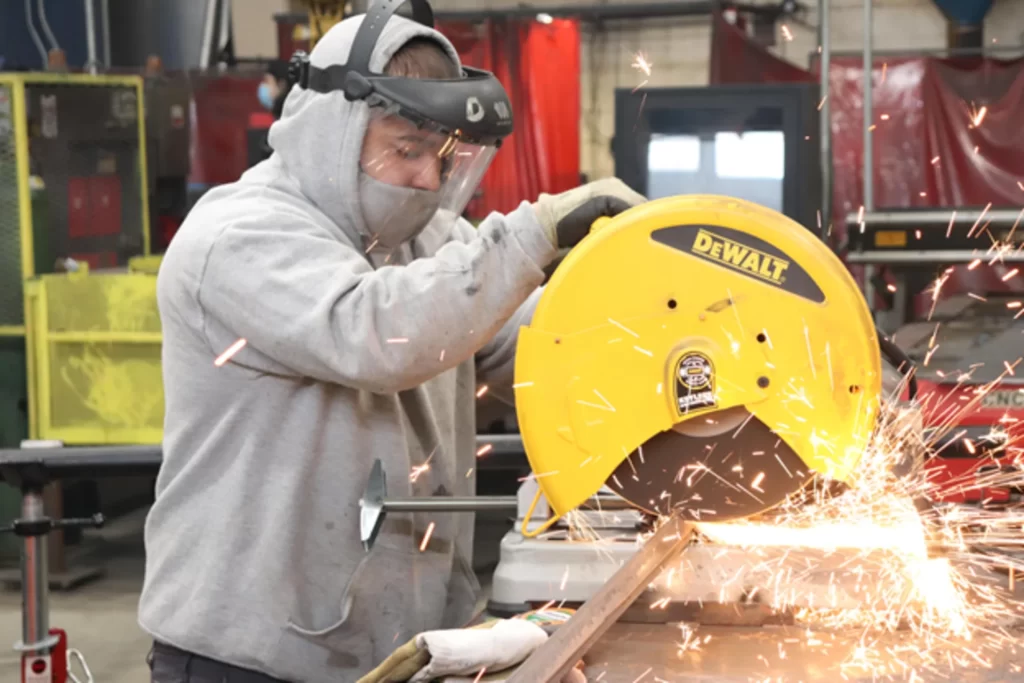Welding is a demanding skilled trade requiring specialized skills to combine metal parts using heat and pressure. While welding can be a lucrative career, it is also hazardous, as it exposes employees to various health and safety dangers. To ensure that welders should stay safe while on the job, it is essential to wear protective equipment and follow safety protocols.
The Importance Of Protective Equipment:
Following are the particular precautionary measures a welding program will teach you:

- Respiratory Protection: Welding generates fumes and gasses that can be harmful to a welder’s health. The fumes can include toxic chemicals like calcium, lead, etc., resulting in respiratory issues, neurological damage, and other health conditions. To reduce the danger of exposure to these fumes, welders should wear respiratory protection, like masks or respirators, to filter out the harmful particles.
- Eye and Face Protection: Welding can also produce intense light, known as ultraviolet (UV) radiation. Not adequately protected can result in skin damage and eye problems, including cataracts. Welders must wear protective clothing, gloves, and a helmet with a face shield to reduce their exposure to UV radiation. Vocational programs for welding teach their students to protect their eyes during welding permanently.
- Hearing Protection: Welding can also generate loud noise, which can cause hearing loss over time. Welders should wear ear protection to lessen their noise exposure.
- Body Protection: Welding can also expose employees to high temperatures, resulting in heat stress. This can lead to dehydration so to lessen the probability of heat stress, they should wear protective clothing to reduce exposure to burns. Welding is a skilled trade that means protecting your whole body.
- Foot Protection: Welders should wear appropriate footwear, like steel-toed boots, to protect their feet from tools and other hazards.
The Importance Of Following Safety Protocols:

- Fire Prevention: Welding courses educate fire prevention beginners as it is imperative. Welding can generate sparks and hot metals that can result in fires and explosions. Welders should take precautions, like ensuring that there are no flammable objects and fire extinguishers are available, to curtail the risk of fire and explosion.
- Electrical Safety: Welding involves working with electrical tools, and welders can be in danger of electrocution if they are not trained properly. Welders should obey safety measures and wear PPE to decrease the danger of electrocution.
- Fall Prevention: Welders may also be in danger of falling if they work at heights. They must wear fall protection equipment, like harnesses, to curtail the risk of falling. The welding program helps students overcome the fear of heights.
- Proper Use of Equipment: Welders should also be trained in using the tools and obeying the manufacturer’s instructions to minimize the risk of injury like using the correct welding method, obeying proper grounding procedures, and using tools adequately.
- Regular Safety Inspections: Regular safety evaluations of the workplace and equipment can also minimize the risk of injury. Welders must report any safety hazards to their supervisor and take steps to deal with them as soon as possible.
Thus wearing protective equipment and obeying safety protocols are vital to ensuring that welders stay safe. Welders should take vital precautions, like wearing respiratory protection, and protective clothing, and obey safety procedures, like clearing the welding area of flammable materials, to lessen their exposure to health and safety dangers. Welding programs at PTTI assure you understand all about the safety tips of welding.
Read more
Job opportunities and Career in Trade Skills |
Trade programs in Philadelphia |
Trade School Infrastructure |
Trade schools in Philadelphia |
Vocational School in Philadelphia |
Welding Technician program

